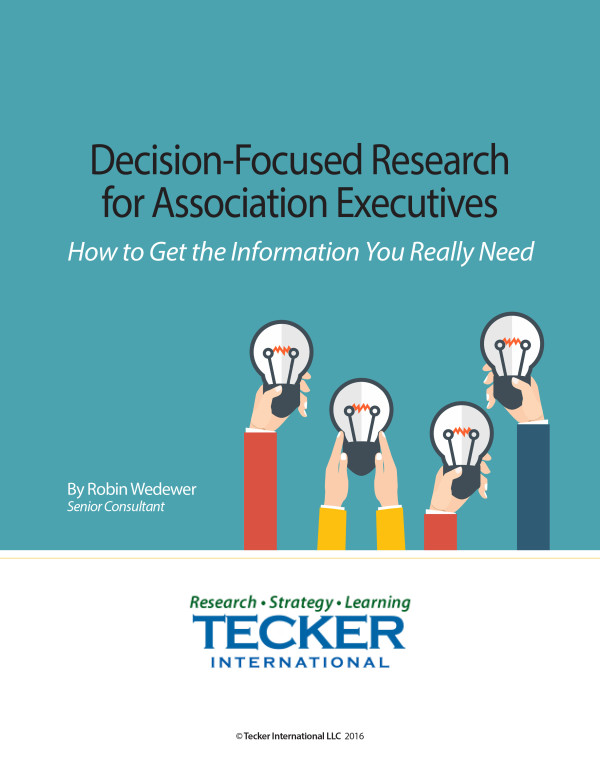Client Question:
We are starting the process to develop a new strategic plan and would like to benchmark our efforts against other associations. What should we plan on spending?
TI Answer:
The range of costs for a strategic plan extends from a low end of $1000-$2500 +/- for a day of discussion led by a friend of a board member, employee of a member company or a retired executive. At the high end, expect a range in excess of $200,000 – $300,000 +/- for redesigning the organization’s value proposition and positioning, the organizational structure and process, and the culture of an increasingly less relevant association.
The usual fee spread tends to be between $10,000 – $15,000 +/- for a two day retreat with some pre-session survey of participants and other key stakeholders to $40,000 – $60,000 +/- for a more comprehensive process that includes internal analysis and realignment of assets with the work required to achieve identified goals.
The high ends investments also tend to include installation of a method for monitoring and adjusting the strategy in response to changes in the environment or experience in implementation.
The best guide for estimating necessary cost involves consideration of the needed balance among four related variables:
- Cost: how much money needs to be invested, including direct and indirect costs?
- Participation: how many people, and which people, need to be actively involved in the process in order for judgements about strategy to be understood and supported?
- Certainty: how confident do you want to be about the judgments made in the process and about the information used to make those judgments?
- Time: how much consultant, staff and volunteer leader time do you have to invest n the project and the time frame for project completion?
Our experience has been that agreement on the right balance of the four variables with those who will need to understand and support the plan for implementation to be successful is the most effective way to understand the differing costs of strategic planning.
Many associations are or already have evolved from traditional strategic planning to a process for planning strategically. The difference is not just semantics. It’s like the difference between using a five year old a printed road map or a real time updated GPS system to guide your trip.
The change in wording is intended to signal a significant change in approach. Traditional planning usually involved bringing together a small group designated as philosopher kings by present power brokers. They would gather for a few days and produce a report that referenced external (environmental scanning) and internal (member) research as rationale for a plan of action with little relationship to what the data really suggested. Often these plans purported to be based on vision or needs. But, few really defined what would constitute differentiating value over current and future time frames.
Many such plans were either job descriptions for the organization or activity oriented punch lists for current and/or proposed programming. They were labeled strategic on the cover; but defined no compelling vision for members or mission and were presented to the Board for passive review and approval. Too often, Board approval was the last time these multi-year business, operational or tactical plans were considered by the Board in program or policy decision-making.
A process for planning strategically involves the implementation of metrics to monitor both whether the plan is being followed and the strategy is working. Attention to progress toward desired goals and objectives is integrated into every board meeting with the priority such discussion deserves. An annual review and update blends the experience of incoming board members with that of outgoing, returning board members and senior staff.
Discussions that do not produce goals, objectives and strategies are not worth whatever the price in terms of earning commitment and common understanding from member and staff leaders. Massive research initiatives that produce information that is not well interpreted or rationally applied can confuse as much as enlighten. Compelling visions unaccompanied by insufficient or poorly allocated resources create far more frustration than pride.
Plans of any kind that are not supported with systems to achieve clarity and consensus on outcomes desired, progress achieved, and adjustments required will often become constraining legacies of the past before their shelf life expires.


